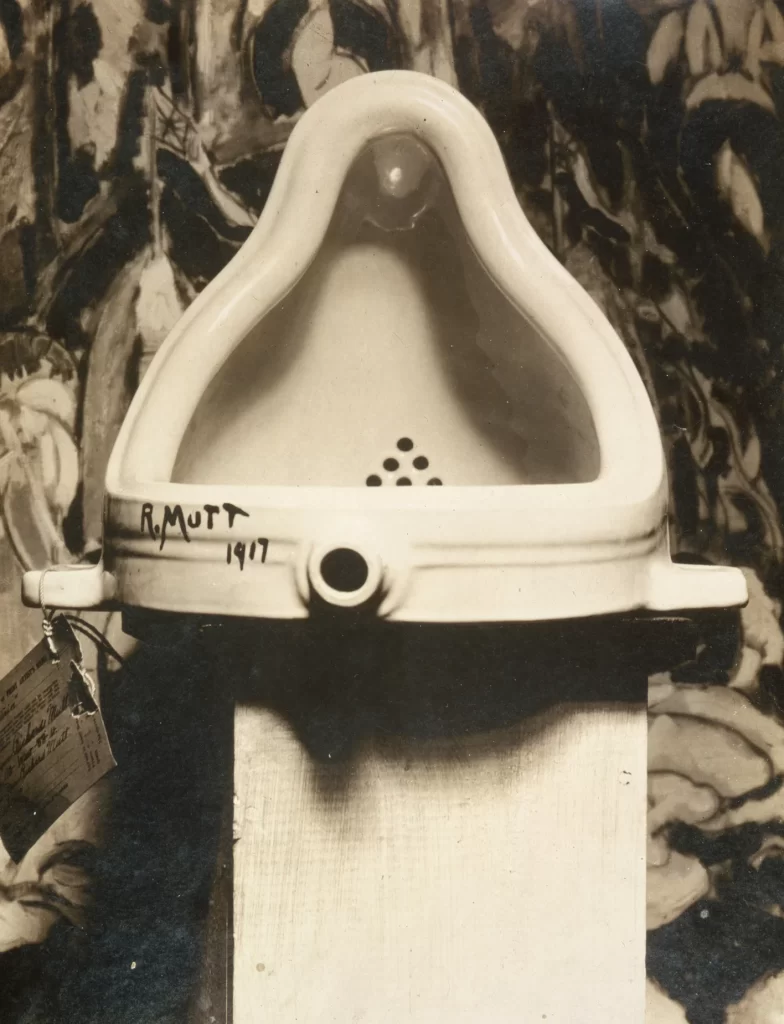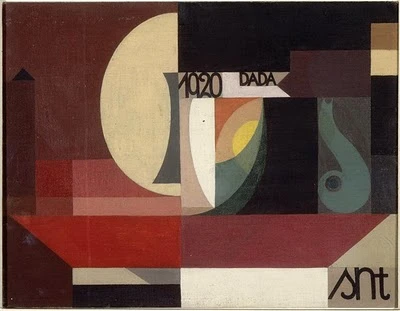What type of art was created during the Dadaism art movement?
Paintings, sculpture, poetry and other forms of art that defied the conventions of classical art were made in the Dadaist art movement.
When did the Dadaism art movement become popular?
In the year 1916, Hugo Ball and Emmy Hennings, together began the Cabaret Voltaire, an artistic club in Switzerland. At this club for political and artistic expression, the Dadaism movement began. Founding members of the club and their prominent colleagues socialised over art.
Where was Dadaism art made and popularised?
Dadaism began in Europe, specifically in Switzerland and later spread to Paris and beyond.
What are the characteristics of Dadaism Art?
After the First World War, artists began expressing political opinions more and more in their work. More so, artists began to question the norms of society and even the rules of what should and should not be considered aesthetically pleasing. Questioning conventions and societal norms, somehow even reflected in avant-garde paintings and literature. Artists no longer wanted to paint a pretty person sitting under a beautiful tree.
You could say that in the post-war society, artists wanted to express more than just rosy emotions. As a result paintings even had upsetting subjects or odd scenes that would otherwise never be painted in a classic art movement. If an artist had an emotion, they expressed it through the canvas and that became art. In other words, Dadaism artworks can be described as “art for art’s sake.”
Top 10 Famous Artworks and Artists of the Dadaism Art Movement
Mona Lisa L.H.O.O.Q. by Marcel Duchamp

When you read the letters L H O O Q it sounds like the French sentence “Elle a chaud au cul” which means “she’s hot in the butt.” This sounds like catcalling the Mona Lisa. Perhaps a comment or rather an insult to what is otherwise considered “high art.” This piece expresses the essence of Dadaism, both in the desecration of the Mona Lisa and the implications of an insult to this respectable Renaissance artwork.
The Art Critic by Raoul Hausmann

A college caricature of a slick man in a suit with teeth clenched in anger and a shoe to represent his brain. This according to Hausmann is what he thinks of an art critic. This piece is seemingly obvious and yet cryptic at the same time. Exploring the minute details with a magnifier is likely to help a viewer dig out more details in this piece.
Fountain photograph by Marcel Duchamp

One would imagine a fountain to be a regal ornament that is further embellished by the spewing of water in a purposefully crafted way. Duchamp’s rendition of a fountain takes that convention and twists it to turn a fountain into a urinal. A comment on the pompous lawn ornament through absurd art installations is what Dadaism is about.
Red Forest by Max Ernst

How do you create an artwork of a forest scene? Well, you simply take pieces of a forest and glue them together. Voilà! You’ve got a forest. Art can be anything. Art can be all around us. Art does not have to be too manufactured. Art can be spontaneous. This piece is perhaps saying all of this and more.
The Enigma of Isidore Ducasse by Man Ray

A Swing machine wrapped in a blanket and tied up with string. What else would you title this piece other than “The Enigma”? The sewing machine is supposed to represent a female and an umbrella is the male. The dissecting table is the bed. This comes from the line “Beautiful as the accidental encounter, on a dissecting table, of a sewing machine and an umbrella” from the writings of Isidore Ducasse. The blanket in this piece represents the scene being intimate and almost private to the point of it being enigmatic.
Republican Automatons by George Grosz

A Soldier General and a nationalist are depicted as robots within a very systematic and straight town. It does not take much thinking to guess what Grosz is trying to say with this political piece. It’s almost as if this could be a Hogarthian illustration for a weekly newspaper published at a time of social turmoil.
A Portrait of Tristan Tzara by Marcel Janco

Tristan Tzara was one of the founding members of Dadaism. Marcel Janco made him a muse in his own Dada artwork. Beneath the skin of his face lies the purple face with an angry eye. The anger beneath the cultured face with a monocle is probably an expressive artist.
The Clown by Kurt Schwitters

What is the most prominent feature of a clown? The protruding, red, ball nose of course. Even though this piece is made of collected scraps, the clown nose allows for some semblance of an actual clown. To make this pop-out feature stand out further, every other part of this sculpture is in drab, cold colours.
Composition Dada by Sophie Taeuber-Arp

Artists generally swear by the golden ratio. However, Sophie Taeuber-Arp’s Composition Dada takes the conventional layout of the golden ration and dances on its grave. An abstract commentary expressed in deep colours and a confused palette.
Glass Tears by Man Ray

We are most fragile when we are sad and vulnerable. And what do we do when we feel vulnerable? We cry. Tears represented with fragile beads of glass, is a mixture go both Dadaism and in a way, Conceptualism. The message of this painting is both overt and subtly depicted at the same time.
Every rule that a trained artist should follow and every technique honed with years of practice is trashed through many Dadaism pieces. Perhaps it is wise to never bother making any sense of Dada artworks.







0 Comments